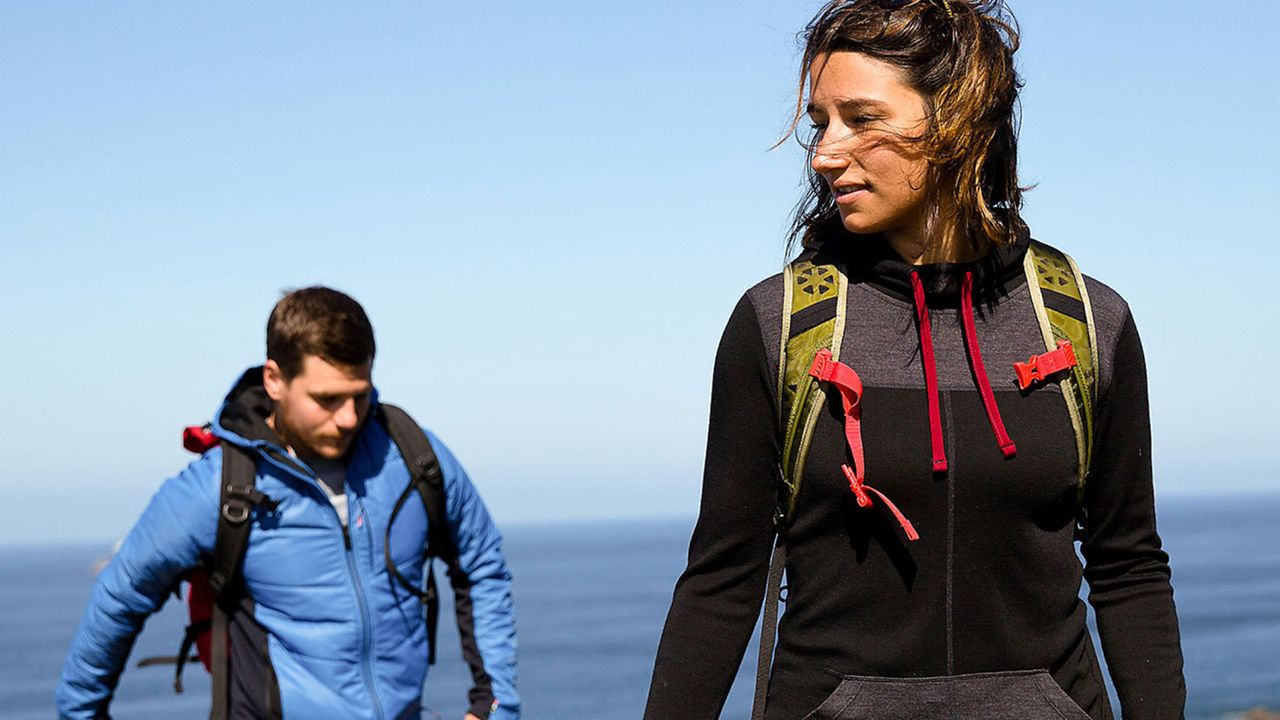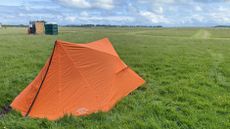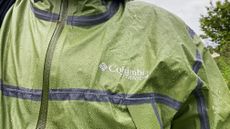ActiveOutdoorsOuterwearWhat’s the best merino GSM? Merino wool weights explainedMerino wool is brilliant, we know that, but what thickness is best? We weigh up the pros and cons of different GSMWhen you purchase through links on our site, we may earn an affiliate commission.Here’s how it works.
ActiveOutdoorsOuterwearWhat’s the best merino GSM? Merino wool weights explainedMerino wool is brilliant, we know that, but what thickness is best? We weigh up the pros and cons of different GSMWhen you purchase through links on our site, we may earn an affiliate commission.Here’s how it works.
Merino wool is brilliant, we know that, but what thickness is best? We weigh up the pros and cons of different GSM
When you purchase through links on our site, we may earn an affiliate commission.Here’s how it works.
(Image credit: Smartwool)

(Image credit: Smartwool)
Jump to category:What is merino?BenefitsDrawbacksWhat Merino GSM is best
Jump to category:What is merino?BenefitsDrawbacksWhat Merino GSM is best
Merino is considered something of a magical material in the outdoor world. Used in everything from thebest base layers,hiking socks, and technical tops on the market to the lining of good-qualitywinter glovesand hats, it feels luxuriously soft next to your skin. It has almost mystical powers when it comes to temperature regulation.
When you look at the specs of a garment containing (or made entirely from) merino, you might see the material listed next to a GSM number. This acronym stands for ‘grams per square metre’ and relates to the thickness of the fabric (notthe weight of the entire garment, although the higher the GSM, obviously the heavier the piece of clothing will be).
But what is the best GSM to go for? To properly understand that – and to appreciate the fact that the perfect number might change according to where you are, what you’re doing and what time of year you’re doing it – we need to take a few steps backwards.
What is merino, exactly?
Merino is an exceptionally fine and soft wool derived from a hardy breed of sheep called – wait for it – the merino, which is indigenous to the Atlas Mountains in North Africa, where it evolved to cope with temperatures that fluctuate wildly between hot and cold.
Spanish wool’, as it was known, became valuable, and inevitably, word about this golden fleece got out. Spanish monarchs gifted a few of the animals to other courts around Europe, and over time, they were exported to newly discovered lands. Now, there are populations of merino sheep everywhere, from South Africa and America to Australia and New Zealand.
The hardy sheep seem to do exceptionally well in the antipodes, where clever companies like the Kiwi brandIcebreaker[external link] pioneered merino wool in high-performing technical garments designed for use in the outdoors during the 1990s.
Sign up to the T3 newsletter for smarter living straight to your inbox
Get all the latest news, reviews, deals and buying guides on gorgeous tech, home and active products from the T3 experts
And what is so good about merino wool?
Companies like Smartwool make a huge range of merino-based outdoor apparel(Image credit: SmartWool)

Companies like Smartwool make a huge range of merino-based outdoor apparel
Companies like Smartwool make a huge range of merino-based outdoor apparel
(Image credit: SmartWool)
The magic of merino wool is its ability to help you regulate your temperature, no matter what the weather is doing: the material supplies excellent thermal warmth when it’s chilly outside (even when it gets wet), and yet the same garment can also keep you cool when the weather is hot. Those sheep are smarter than they look…
But wait, there’s more. Much more. Unlike most kinds of wool, merino doesn’t feel itchy or scratchy next to your skin (we won’t go into too much boring detail about why, but basically, its fibres are only 16.5 to 24 microns across, about half the thickness of most wool fibres, so instead of sticking into your skin and prickling, they just bend and feel super soft). These same fibres also hold lots of air, which is why the material packs so much insulation power.
Being a natural fabric, merino lets your body breathe beautifully, but when you work up a sweat, the hygroscopic wool fibres absorb moisture and then wick it away from your body through a process of evaporative cooling, which stops you from overheating.
The fantastic fabric even boasts naturally occurring protein that breaks down the bacteria in your sweat responsible for making your clothes stink. This means you can wear Merino garments multiple times without washing them (or losing friends), which is incredibly useful when you’re carrying all your own kit on a multiday outdoor adventure and trying to keep the weight of yourbackpackand the bulk of your kit down, whether you’rehut hiking,backpack camping,bikepackingorfastpacking.
In terms of the GSM, though, the higher the number, the thicker the Merino garment will be and the more insulating power it will pack. This is a fantastic advantage when you’re looking for a versatile base layer or a technical top that will perform in an environment with variable temperatures (cool in the morning and evening but warm during the day, for example).
Are there any drawbacks to merino?
As magnificent as it is, merino does, of course, have some downsides. One is that if it gets wet, it takes much longer than a synthetic garment to dry (although it will keep working when it’s damp).
The other is that, sadly, used on its own, merino usually won’t last very long – thin merino clothing with a low GSM especially will quite quickly develop holes and/or lose its shape.
Garments with higher GSM are tougher and will last for longer, but for real robustness and longevity, look for models where the merino has been mixed with another material like polypropylene and/or elastane. This is especially important when you’re looking at items of clothing that take a lot of punishment, such ashiking socks.
OK, so what GSM of Merino is the best, then?
The Finisterre Eddy base layer works well from the beach to the peaks(Image credit: Finisterre)

The Finisterre Eddy base layer works well from the beach to the peaks
The Finisterre Eddy base layer works well from the beach to the peaks
(Image credit: Finisterre)
The weight of your Merino base layer really depends on what you’re planning to do and in what kind of conditions. It also varies according to the garment in question and the job it needs to perform because selecting the best GSM for Merino clothing doesn’t just come down to temperature control (although that is a big part of it).
If you’re going on a spring or autumn hike or bike ride or doing something energetic like hill hiking, running or skiing in winter, it’s a good idea to adopt a layering system, starting with a goodcold-weather base layerand lightweight Merino is the ideal material for these garments.
An example of the perfect piece to use is the excellentHelly Hansen LIFA Merino Lightweight Half Zip Baselayer. This high-performing top is made with 160gsm merino, which makes it the ideal weight and thickness to wear as your underlayer.
Similarly, for trail running escapades, summer day walks and other fair-weather outings, a technical T-shirt made from lightweight merino is absolutely ideal. If conditions get chillier or wetter, you can layer up with a goodfleeceand/or aweatherproof jacket, and the Merino base layer will continue to do its job underneath.
(Image credit: SmartWool)

(Image credit: SmartWool)
In colder environments, especially if you’re climbing or camping or doing anything that involves periods of standing still, and when carrying weight is less of an issue, then a thicker mid-layer-style garment is better suited to the task.
A top such as theQuantum III Long Sleeve Zip Jacket from Icebreaker[retailer link], which is constructed with 260 GSM Merino, will keep you toasty and warm. As temperatures get lower still, then you might need to increase the GSM of your outer layer to something on par with theSmartwool Intraknit Active Full Zip Jacketor theSmartwool Smartsoft jacket(both retailer links).
Garments with a GSM of 300 or more can be described as heavyweight (although that doesn’t necessarily mean the entire piece of clothing will be heavy, it’s just that it’s constructed with thicker, more densely woven wool). It’s helpful to break it down into three categories, like so:
Anything else to consider?
It’s worth remembering that, as a renewable and natural material, merino is far more environmentally friendly to produce than synthetics, and at the end of the garment’s life, the fabric will eventually biodegrade (unlike synthetic clothes, which stick around forever).
It is an animal product, however, and there can be ethical issues around that – especially in regard to the horrific practice of mulesing that happens in Australia to combat maggot infestations in the heat. Thankfully this is unnecessary in merino flocks kept in cooler environments such as Europe and New Zealand (where mulesing is also illegal), and you can look out for garments that specify they are ‘mulesing-free’.

OMEGA puts the moon on your wrist with its new Speedmaster Moonphase MeteoriteOMEGA adds two new Moonphase Meteorite watches to its Speedmaster line-up
OMEGA adds two new Moonphase Meteorite watches to its Speedmaster line-up

There’s an amazing money-off deal on Samsung Galaxy S25 alreadyGet £50 / $50 off a new Samsung Galaxy S25 when you register your interest
Get £50 / $50 off a new Samsung Galaxy S25 when you register your interest

Change my mind: the smaller, the better with portable power stationsPut your portable power station to work when you’re not using it
Put your portable power station to work when you’re not using it

This rugged adventure Garmin is mega cheap in Walmart’s Black Friday saleThe Instinct 2 is a top watch for outdoor and sport enthusiasts
The Instinct 2 is a top watch for outdoor and sport enthusiasts

YETI’s best-selling products are ridiculously cheap in Amazon’s Black Friday saleFancy yourself a tumbler, rambler or cooler? Amazon’s reduced them all
Fancy yourself a tumbler, rambler or cooler? Amazon’s reduced them all

AKASO Seemor 200 night vision goggles review: unparalleled clarity for nighttime adventuresAKASO’s new NVD unlocks the night with cutting-edge colour vision technology
AKASO’s new NVD unlocks the night with cutting-edge colour vision technology

8 must-have hiking gadgets for tackling cold and wet trailsWhether it be wet and rainy, or super chilly, these 8 gadgets can make your outdoor adventure even more enjoyable
Whether it be wet and rainy, or super chilly, these 8 gadgets can make your outdoor adventure even more enjoyable

Vango Classic Instant 300 review: a festival-goer’s dream tentSuper quick to pitch and pull down, this reasonably priced tent is spacious, tall and well-featured for festival use
Super quick to pitch and pull down, this reasonably priced tent is spacious, tall and well-featured for festival use

Is Columbia’s OutDry Extreme the best waterproof-breathable material that no one is using?ODX hasn’t revolutionised the outdoor apparel world in the way its creators expected it to – but that could be about to change…
ODX hasn’t revolutionised the outdoor apparel world in the way its creators expected it to – but that could be about to change…

Best YETI coolers 2025: ice cold excellenceKeep food and beverage frosty with our curated selection of top-rated YETI coolers for every occasion
Keep food and beverage frosty with our curated selection of top-rated YETI coolers for every occasion